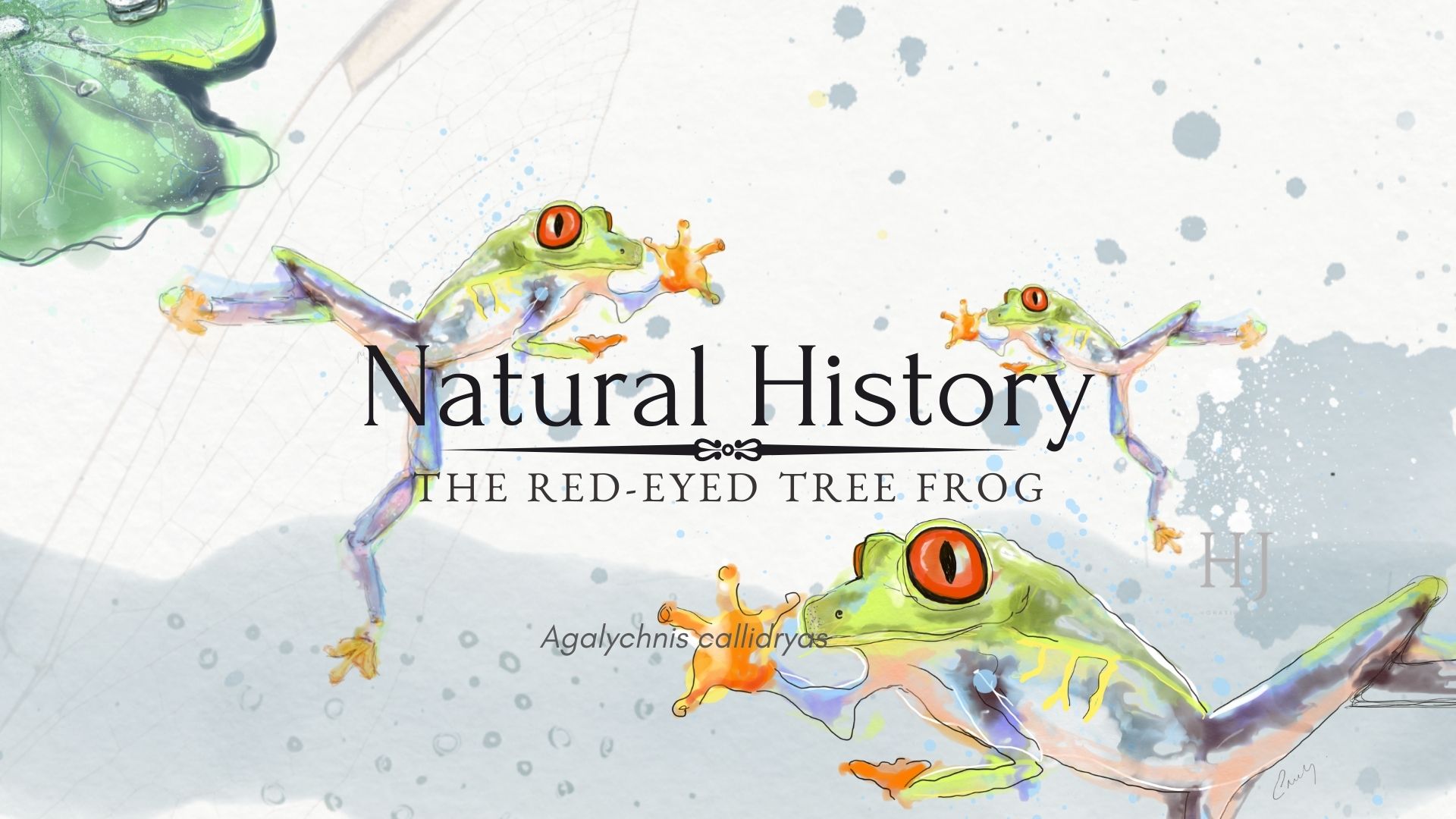Published by: Digital Schools
Natural History
The Red-Eyed Tree Frog
Scientific name: Agalychnis callidryas
Class: Amphibia
Family: Phyllomedusidae
Kingdom: Animalia
Higher classification: Agalychnis

I hope my frog caught your attention.
This little guy is the poster child of environmental awareness campaigns worldwide, and it is easy to see why.
The Red-Eyed Tree Frog, sometimes also referred to as a ‘Leaf Frog’, is native to central and South America. It has striking features that include, Irridescent orange-red eyes, that bulge from a slender green body, luminous orange toes, and an inky blue underside.
We are Family
Frogs are our distant relatives. Having lived on the earth for some 250 million years, these adaptive vertebrates were the first to bridge land and lake and marked the beginning of animal evolution on land.
Frogs are an important emblem of nature; they represent the finite balance and health of the planet. Sensitive to toxins, climate change, habitat destruction, pollution and predation, the decline or extinction of frogs species indicates disease in all other areas of the biosphere.
The natural world and its abundance of rare and gorgeous creatures are fast becoming natural history. We are hurriedly trying to capitalise on the last remaining sanctuaries of rare creatures, plants, microbes, fungi, insects, reefs and wilderness – documenting and synthesizing natures wonder market compounds and chemical used in pharmacy – are only now coming to attention as we lose time.
Learn more on frogs here
The Sixth Mass Extinction is Now
Science says we are now in the 6th Mass Extinctions; the 5th was the end of the dinosaurs 65 million years ago, where it is believed a giant asteroid struck the earth and caused the mass die out. Our extinction is unique to all others; it is the first to be caused by animals’ wiping out all others.
To capitalise on the earth natural resources for wealth, we have soured the soil, turned the seas to acid and poisoned the air. Sounds a little dramatic, too bad. It would nice to sugar coat this article, but after learning that the entire Koala population of the Kiwarrick State Forest in NSW ( where I am from) was lost in our 2019 firestorm, I have a moral duty to make a point.
As a content writer for education, I rarely share my own voice. I try to stay impartial and provide information and resources that help the reader make up their own mind. But today, I am sharing a little bit of myself with you in the hopes that the project I am working on, Natural History, might catch the attention and the imagination of you and spark your interest in saving the planet.
This article will be one of five that will feature a combination of unique and endangered animals from around the world. The aim is to inspire you to pay attention to what is happening in your own backyard, make better decisions about where you spend your money, what you put into your body, and how you treat the living world around you.
We are totally reliant on each other and all other plants, animal, fungi, insect, and invertebrates in the world. Tiny changes are still meaningful, and your contribution, however big or small, could help save what precious resources and animals we have left.




